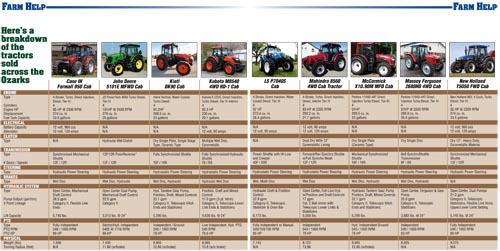Grass tetany, by definition, is “a disease of livestock caused by magnesium deficiency.”
This nutritional disease is also known as winter tetany and grass staggers and can be serious or even fatal to cattle and other livestock.
When does grass tetany most often occur, and when are cattle most susceptible?
“In the Ozarks, the time that grass tetany seems to hit is from mid-January to early April,” Eldon Cole, livestock specialist with the University of Missouri Extension, told Ozarks Farm and Neighbor. “I have had a few reliable reports of a problem in the fall. The cattle most affected are older, 5 years and beyond, cows near calving or in early lactation.”
Dr. Heidi Ward, assistant professor and veterinarian with the University of Arkansas Division of Agriculture, also noted that grass tetany can cause a greater problem when cows are lactating.
“Grass tetany is related to low magnesium concentration in the diet and/or factors that affect magnesium absorption in the rumen, such as high potassium or nitrogen concentrations. Magnesium is essential for proper enzyme and nervous system function and for efficient carbohydrate metabolism,” she said. “Because lactating and pregnant cows experience a lactational/gestational drain of magnesium, they are more susceptible to grass tetany. The effect is more severe if the cattle are grazed on a pasture with inadequate magnesium concentrations.”
There are certain factors that can contribute to grass tetany. Eldon Cole said that in situations where there is a high risk of grass tetany, “grass and soil usually are very low in phosphorus and the forage may be high in potassium and low in calcium and magnesium. Weather is another contributor to grass tetany.
“Although not well understood, cool cloudy conditions seem to increase the risk of grass tetany,” said Dr. David Lalman with the Oklahoma State University Extension. “The exact mechanism is not known, although these conditions do stimulate plant uptake of potassium and production of organic acids, both of which are known to antagonize magnesium absorption.”
Fertilization practices can also contribute to the risk of grass tetany.
“Decrease in forage magnesium can be indirectly caused by heavy fertilization of pastures forages heavily fertilized with potassium (potash) can decrease the dietary absorption of magnesium in a cow’s rumen,” Ward said, adding that “young, rapidly growing forage usually has an increased content of potassium that can also decrease dietary absorption of magnesium.”
Signs of grass tetany in cattle include uncoordinated gaits, followed by convulsions and sometimes, coma or death.
Cole said once a cow with tetany has gone down, they often become belligerent and struggle. To treat grass tetany, the cow’s magnesium imbalance needs to be restored.
Ward said this is done by “an intravenous infusion of CMPK electrolyte solution. This solution contains calcium, magnesium, phosphorus and potassium as well as dextrose.”
This solution must be administered with care; proper steps include warming the solution to body temperature, giving at an intravenous dose of 500 mL per 800 to 1,000 pounds of body weight, and administering the solution very slowly to prevent shock to the animal.
Ward strongly recommends monitoring the heart rate and breathing of the animal during the entire process.
Prevention of grass tetany can start with supplementing livestock with magnesium thirty days before calving, especially when the conditions for tetany are present. Reviewing fertilization practices, and having both soil and forages tested can also help producers understand their risk of grass tetany. Finally, timing the turnout of cattle to steer clear of young, fast growing forages can also keep tetany under control.






